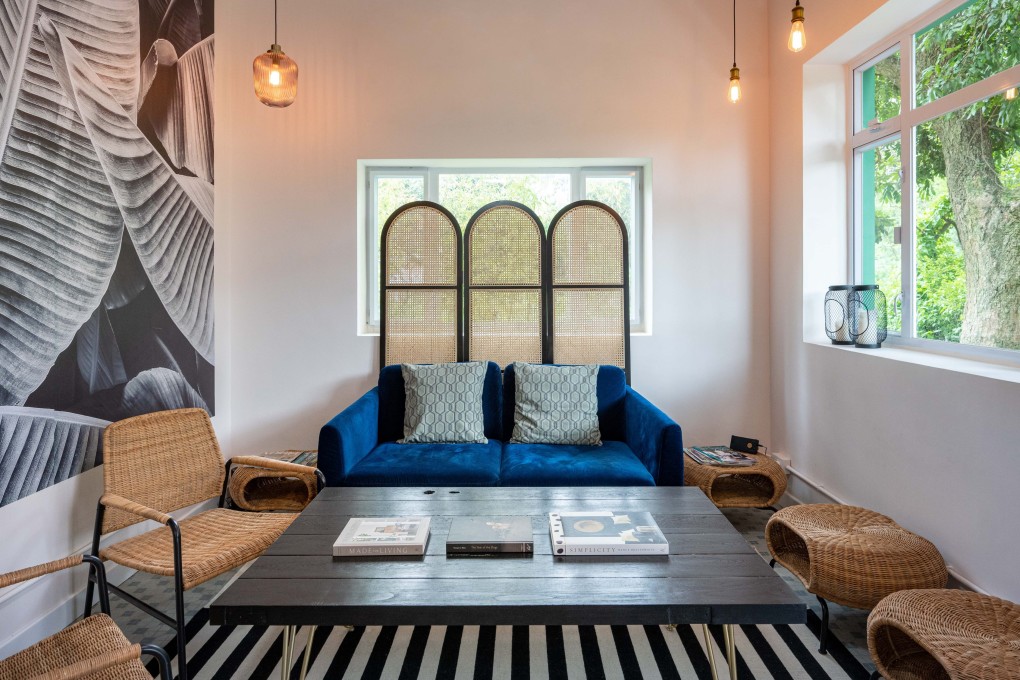An island retreat with old Hong Kong vibes, rattan furniture and a rooftop for entertaining guests
- Built in 1965, this one-bedroom cottage on Lamma captivated serial renovator Brooke Babington, who turned the 680 sq ft space into a tranquil city escape
- Original 1960s floor tiles lend a vintage feel, rattan screens add privacy and the rooftop is perfect for barbecuing, dining, sunbathing and socialising

“I really like old properties and I always look for non-cookie cutter places to fix up,” says former sales trader and long-term Hong Kong resident Brooke Babington, who has been renovating properties in the city for 12 years. “I’ve always been more of a Cheung Chau girl but my agent told me I had to see this place on Lamma.”
Built in 1965 in Tai Peng Old Village – on Lamma Island, Hong Kong – at the end of the appropriately named Snake Path and a 15-minute uphill walk from Yung Shue Wan ferry pier, the one-bedroom cottage, with granite walls and high ceilings, captivated Babington, who also appreciated the privacy it offered.
“It wasn’t abandoned. It had been passed down from owner to owner but it had never been really loved and needed a lot of work,” she says. She immediately put in an offer.
That was five years ago. Babington took her time renovating the 680 sq ft (63 square metre) house and slowly dealing with major works, such as removing the septic tank and connecting to the sewerage system, upgrading the electrics, replacing the air conditioners, and remodelling the shower room and separate toilet into one cohesive space.
Pulling up the aged floorboards revealed original 1960s tiling, much to Babington’s delight. “I’m nostalgic for the old 1950s Hong Kong look and I loved the pattern of the floor tiles,” she says, adding that it was also cheaper to restore the tiles than to replace them.
Covid-19 arrived while the renovation was plodding along, giving Babington the motivation she needed to finish the job. “I love the city but I was craving nature and wanted somewhere my daughter and I could come and relax,” she says. Structural issues sorted, the next step was to gut the interiors.
